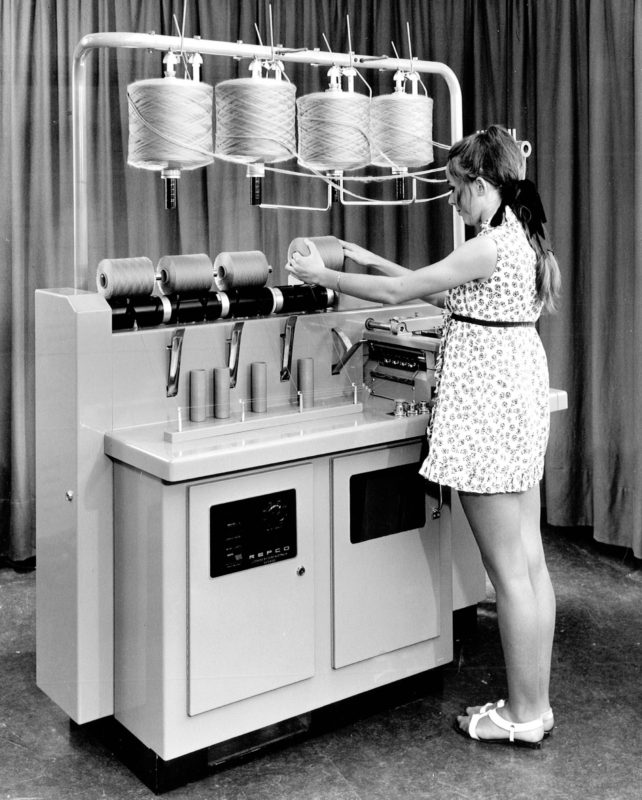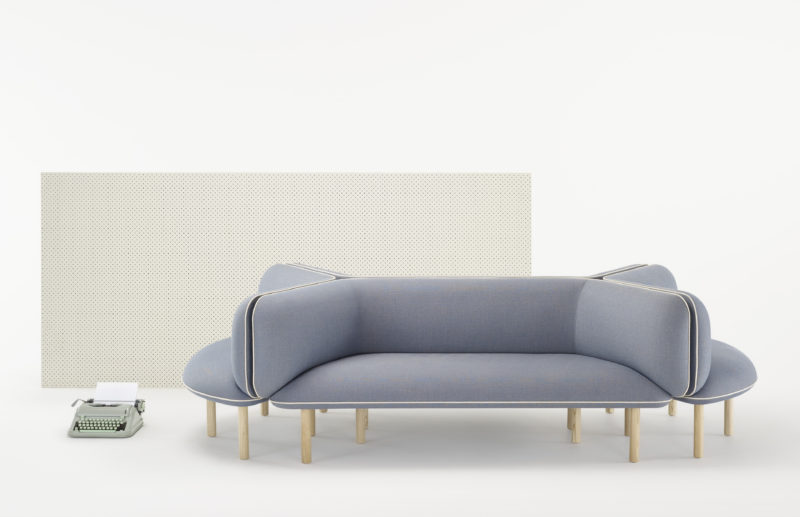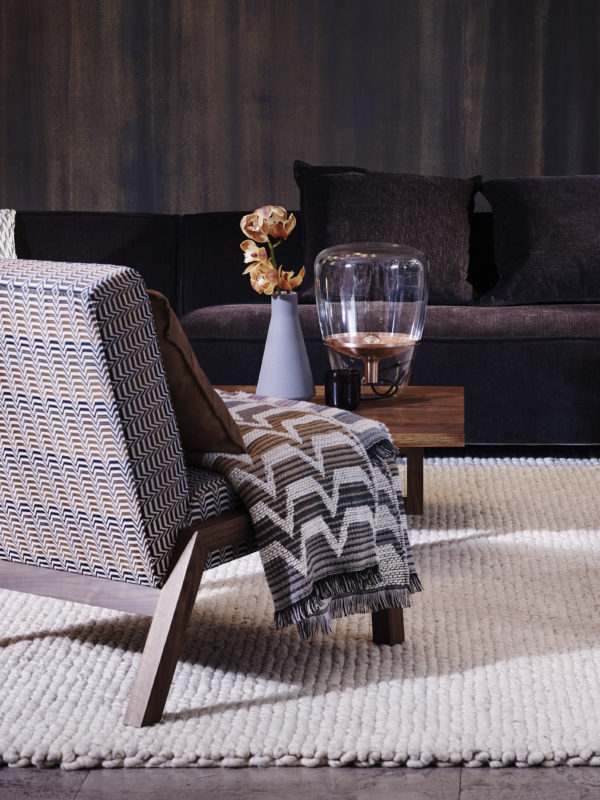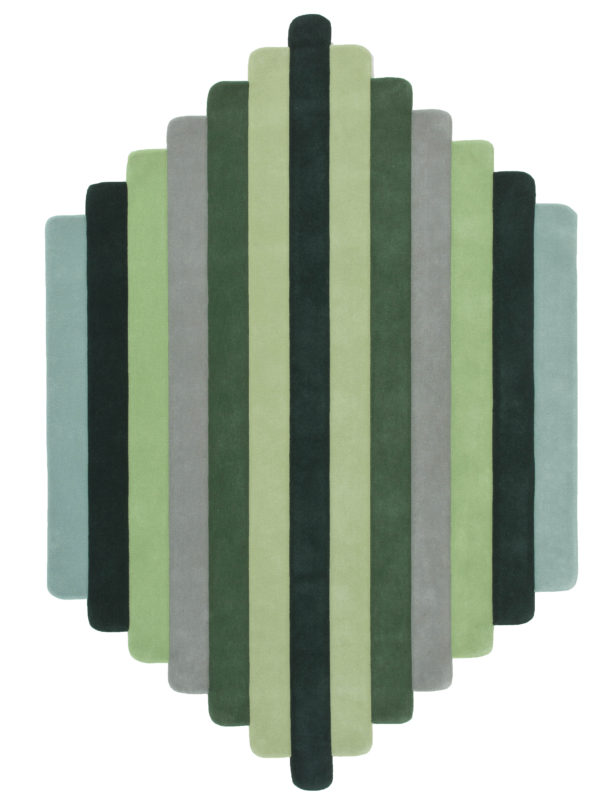
Wool’s worth
Share
Coco Chanel’s ‘little black dress’ changed fashion forever at the end of World War I. It freed women from oppressive old-world design, with a flattering new cut that was simple, practical and chic. Its secret was the lightweight wool jersey fabric that relied on wool’s strength, elasticity and breathability to keep its cool, and perfectly keep its shape.
Dior did it again at the end of World War II with his startling ‘New Look’ collection, which lavishly used wool as a reaction to war-time scarcity. Designers have been in love with wool ever since.
As the world’s largest exporter of wool, and producer of its finest fibre – the merino – Australia is a major force in global fashion and design economies. Every year, the Australian Wool Innovation group supports Australian exhibitors at the world’s largest textiles trade – Heimtextile in Frankfurt.
Our first merinos came from Spanish royal stock in 1797, and selective breeding since has resulted in its refinement as the best natural fibre for next-to-skin products such as fashion and homewares textiles, bedding, outdoor and sporting goods, and, more recently, the lining of wetsuits and the growing ‘athlesiure’ market for outdoor activewear.

Australia’s 1961 invention of the Repco self-twist wool spinning machine enormously increased wool output worldwide. Image courtesy CSIRO.
It was Missoni who first produced a tracksuit from lightweight wool for athletes in training. Founders Rosita and Ottavio Missoni started a small knitwear shop in 1953 in the north Italian town of Gallarate with Rosita as pattern-maker and Ottavio (‘Tai’) as colourist and technician producing lightweight wool tracksuits, knitwear, and a small catalogue of women’s garments, which caught the eye of American Vogue editor Diana Vreeland in the sixties, who brought the brand to America.
Designers are drawn to the unique properties of wool – its warmth, fire-resistance, self-softening lanolin and a unique structure (similar to hair) that helps textiles and yarn hold their shape. Just as Chanel and Dior used these to great effect for form-hugging couture, Australian furniture and industrial designer Tom Fereday uses wool fabric to give his Wes collection of sofas and ottomans a similarly tailored line.

Tom Fereday Wes collection for Zenith: plywood frames, solid ash legs and Kvadrat Maharam Sunniva wool fabric. Photo by Haydn Cattach.
Made in Australia by The SD Element and distributed by Zenith, the collection relies on the tautness of a wool upholstery fabric from Kvadrat Maharam (and the upholsterer’s skill) to achieve its clean, crisp edges.
“Wes conveys complex yet minimal forms. It’s meant to have a bit of tension, but still look soft and inviting,” says Fereday. “The doming of its compound curves is a real challenge for the upholsterer because is has to look seamless (and beautiful) from every angle.”
A lot of work goes into getting the right angles for each piece and to achieve this, Fereday worked with master upholster Darren McKinnon at The SD Element.
To the plywood frame they layered fire-retardant foam of different densities to balance comfort and form, sidestepping the need for moulded foam panels. From there, it was McKinnon’s skill that finessed the final shape. The fabric selection being critical.

Spence & Lyda ’Lounge Chair #3’. Walnut frame upholstered in Missoni Home ’Santafe #174’. Missoin Home ’Socrate #100’ wool throw. Photo by Prue Roscoe.
“Only wool gives you that super-fine radius; it’s a lot stronger and easier to manipulate than any other fabric. Upholstering is a lot like sculpting,” says McKinnon.
From sculpted sofas to a graphic collection of rugs from the mind of Gavin Harris… Mindscape is Harris’ second collaboration with Designer Rugs since winning the Evolve competition in 2010. He is design director at Futurespace where he creates workplaces for the likes of Fujitsu, Microsoft and advertising’s McCann & CMG Group.
With this collection of rugs, he explores both the conceptual and practical as it crosses over from his personal design enquiries into the client realm.
“I had been thinking about the typical length to width ratio of rugs, and at the same time, some of my clients at Futurespace were wanting statement pieces for reception areas – objects reflecting their company ambitions,” Harris explains.

’Lateral’ wool rug from Gavin Harris’ Mindscape collection for Designer Rugs. Image courtesy Designer Rugs.
“With ‘Reflector’ for instance, I wanted to create a three-dimensional effect using simple gradation in tone and form. I see it positioned as a diamond in a room, not a square. ‘Lateral’ was about creating a sense of movement through space using graded lines in green, which is both a relaxing and invigorating colour. Something common to all the designs was the lack of traditional corners and edges, so a lot of technical precision was needed to make those soft ‘rounded’ edges strong.”
The collection is hand-tufted from New Zealand wool – which is to carpet (due to its fibre length) what Australian merino is to knitwear (for its fineness). Lia Pielli, a senior textile designer at Designer Rugs helped translate Harris’s ideas into works of texture and tonal subtlety.
“We combined two different yarns – a single ply yarn for the finer-edged elements and a felted yarn (which is quite chunky) for the large graphic blocks of colour. Playing with different pile heights brought an additional textural element to the graphic designs,” Pirelli explains.

The crimped structure of wool fibres helps yarn and fabrics hold their shape. Image courtesy CSIRO.
“Wool is very much like curly hair in structure, it always wants to snap back to its original place, because it’s got a zigzag shape to the fibre – like a spring. Even if you’ve had a heavy object on a carpet for a while you can usually apply some steam and bring the fibre back to form.”
If a zigzag is the key to wool’s resilience, it is also the emblem of Missoni – today a global brand, famed for its super-fine knitwear, electric colourways, and for being one of the few fashion houses to leap successfully from catwalk to couch.
Continuing her grandparents’ tradition of marrying craft and design with innovation, heiress and fashion designer, Margherita Missoni, reflects: “There’s actually no finer natural fibre to work with. It makes me feel at home; and it’s very personal to me, because it’s one of the first threads my grandparents used.” And it comes from one of the oldest and most resilient natural fibres that we have.
This article originally appeared in MEZZANINE issue 6 – available online on newsstands and digitally through Zinio.
Read about material craftsmanship in wood, also from MEZZANINE, over here.
You Might also Like
























